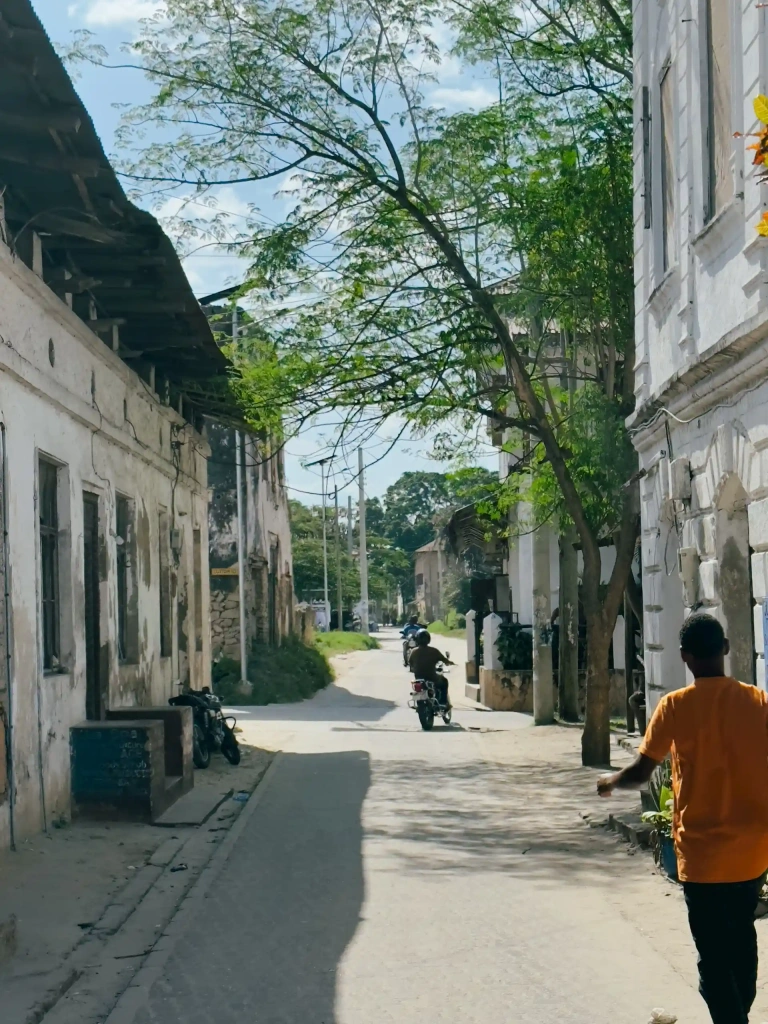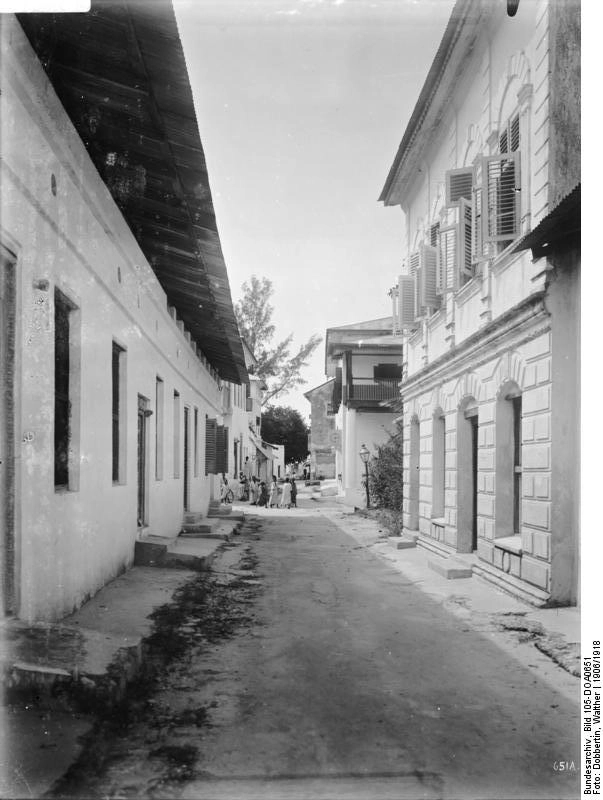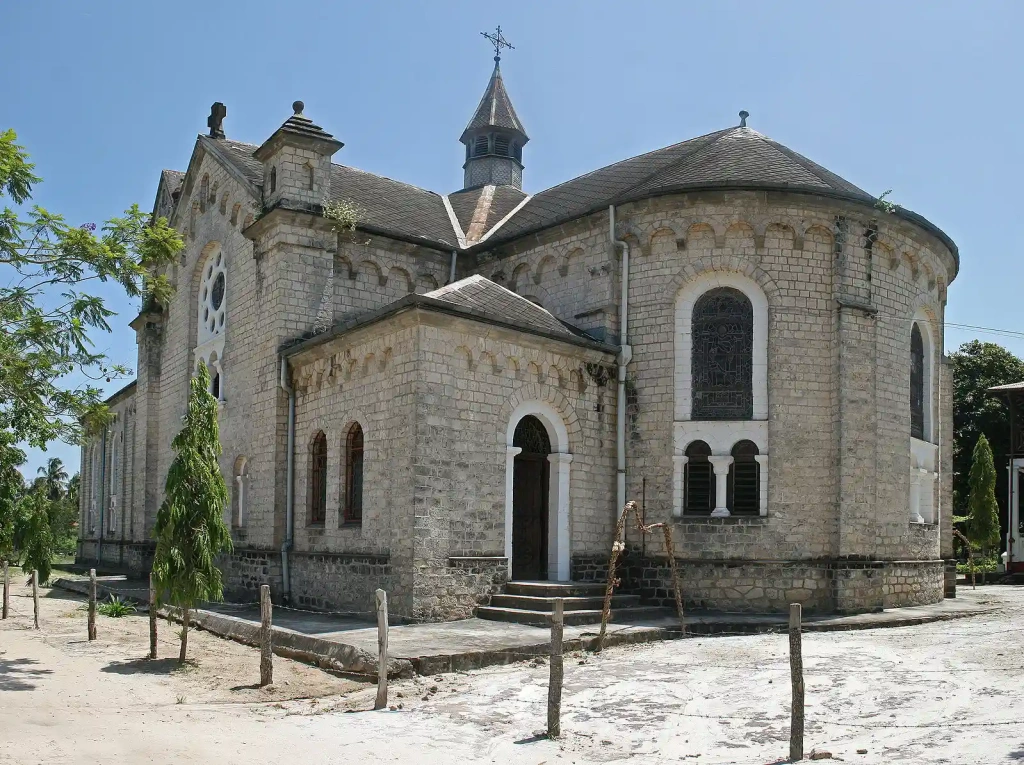Bagamoyo is a historic coastal town on the Indian Ocean coast of Tanzania, officially founded at the end of the 18th century. With the arrival of Arab settlers, the town transformed into an important trading center. During German colonization, it housed the administration from which the Germans governed all their colonies in East Africa. After World War I, the British took over Bagamoyo, and the town's importance as a strategic trading hub gradually declined. Today, it is the capital of the eponymous district in the Pwani region — a quiet, peaceful place and a UNESCO World Heritage Site with rich cultural and architectural heritage.
History of Bagamoyo town
The city emerged on the site of the ancient Swahili settlement of Kaole, which dates back to the 8th century. During the 8th to 9th centuries, Arabs known as "Shirazi" began to settle here. At this stage, the majority of Bagamoyo's population consisted of local farmers and fishermen. The Arabs traded in fish, salt, and , but it was still a small, almost unremarkable port village.
The next milestone in the city's expansion occurred in the 14th century. In an attempt to escape the Mongol invasion, which had captured the Arab city of Shiraz, numerous Shirazi refugees arrived on the East African coast.
But Bagamoyo's importance began four centuries later. By the 18th century, Arab traders had transformed the town into a strategically important center—the endpoint on the route along which caravans of slaves from the inland regions traveled. Wealthy Muslim families settled in Bagamoyo, introduced tax collections, and traded salt extracted on the Nunge coast near the town.
In the 19th century, the Germans colonized the region, making Bagamoyo its capital. It became an important administrative center from where German colonizers managed all their East African colonies. However, Bagamoyo remained the capital for only two years. The shallow port did not meet the colonizers' needs, so they moved the administration to Dar es Salaam.
During World War I, the German imperial government lost all its colonies. Bagamoyo came under British control and gradually lost its status as an important trade and administrative center. The town was once again inhabited by fishermen and small traders, and the colonial architecture became dilapidated and partially turned into ruins.
Once, the local port was one of the most important trading ports on the entire East African coast. It was the last stop for slave and ivory caravans, who were marched on foot from Lake Tanganyika. From Bagamoyo, they were transported to Zanzibar and then sent to different parts of the world. Today, Bagamoyo is a quiet, cozy town with an interesting, unique history, with a few German colonial buildings serving as reminders.
How to get to Bagamoyo?
The city is located 75 km (about 47 miles) north of Dar es Salaam, on the coast of the Zanzibar Channel, opposite the island of Zanzibar. From Dar es Salaam, you can take a bus that runs several times a day from the central bus station. Alternatively, you can hire a taxi. Travel time by car can range from one to three hours, depending on road congestion.
Many international airlines fly to Dar es Salaam, including Air Tanzania, Kenya Airways, flydubai, Emirates, Turkish Airlines, American Airlines, Air India, British Airways, Air Canada, Japan Airlines, Air France, and others.
The main airport in Dar es Salaam is Julius Nyerere International Airport (DAR/HTDA).
Historical heritage of Bagamoyo
The city's colonial past has left an indelible mark on its appearance. Some architectural monuments have survived to this day, offering a unique chance to experience the history of East Africa.
Kaole ruins
The village of Kaole, officially known as Pumbuji, is one of the oldest places in the region. When Shiraz, the native city of Arab immigrants, was attacked by the Mongols in the 13th century, many fled to the East African coast. The Kaole Ruins are a reminder of those times. They are located approximately 5 km (about 3 miles) east of Stone Town — the historical center of Bagamoyo and a national monument of Tanzania.
The oldest architectural object at this site — the remains of an Islamic mosque — dates back to the 13th century, marking the founding of Kaole. Some historians believe it was the first mosque on the mainland of East Africa, built by the Shirazi settlers.
In the northern part of the mosque are ancient burials, including two large tombstones with Quranic inscriptions dated to the 14th century.
The museum offers visitors an opportunity to learn about the city's history in the context of its once flourishing slave trade. Located in an old building that served as a guesthouse for slave and ivory traders in the 19th century, it reflects an unusual combination of Islamic and East African architectural styles.
Built in the 1860s by Mr. Said Magran Awadh, an Arab merchant who owned coconut plantations, the two-story building houses ancient coins and ceramic household items that have survived several centuries. Visitors can also see other historical artifacts that transport them to the challenging era of Arab dominance and the slave trade in the region.
Old Fort
An ancient stone structure from 1856 was part of a fort that came under the ownership of a well-known Indian merchant in 1890. In 1894, he leased the fort to the German colonial administration for use as a garrison.
After World War I, the British converted the building into a prison. After independence, it served as a police station until 1992. Currently, the Old Fort houses the headquarters and training center of the Department of Antiquities.
Boma
A former colonial building constructed between 1895 and 1897 as the residence of the German district administration. Inside the monumental two-story structure with two towering towers were spacious conference rooms, halls, kitchens, bathrooms, and storage rooms.
Even after gaining independence, the building continued to serve as the Bagamoyo district administration under local authorities, who eventually left due to its dilapidation. In 1998, a heavy downpour collapsed the facade with the balcony, worsening its condition.
From 2009 to 2016, the building was closed for restoration. Currently, the Boma stands empty, and its future remains uncertain.
Old Market
During the Arab resettlement, the local slave market was located here. According to some unconfirmed accounts, slaves were taken through a hidden underground tunnel past customs and sent to the large market in Zanzibar during high tide. However, no underground passage has been found to confirm this.
Now, an art market operates on this site with the support of the Bagamoyo Arts and Cultural Institute, where Tanzanian painting, sculpture, drama, dance, and drumming are taught. Here, you can purchase paintings, ceramics, and other artworks by local artisans — a great opportunity to take a piece of East African history home.
Catholic Mission — the oldest in East and Central Africa
The Bagamoyo Catholic Mission was founded in 1868. The land for its construction was donated by Muslims under Sultan Majid to the "Fathers of the Holy Spirit." The oldest Catholic church in East and Central Africa once stood here but was later demolished, leaving only a tower that became a memorial. It was here that the body of was kept before being sent to Great Britain.
On the mission grounds, there's a large Catholic church built between 1910 and 1915, featuring impressive altar paintings depicting scenes from the history of slavery, a missionary memorial, cemetery, and pilgrimage chapel. Other buildings include the Old Fathers' House, a three-story building with wide balconies, built in the pre-colonial mission style.
The Old Fathers' House desperately needs reconstruction, especially after its main facade collapsed in August 2009. Currently, the Catholic Museum is located in a neighboring building.
The mission spans a vast area accessible via a beautiful long avenue. It includes a sacred grotto, a Catholic girls' secondary school, a Catholic hospital, a carpentry workshop, a teacher training center, and an old cemetery with the graves of the first missionaries.
Each year, thousands of Catholics from all over Tanzania make a pilgrimage to the mission via the famous Mango Avenue — a man-made monument symbolizing the struggle against slavery. According to documented data, the avenue was built in 1870 by freed former slaves.
The largest and most important cultural festival on the Tanzanian mainland
Bagamoyo hosts a significant seven-day arts festival annually, usually in October or November. This vibrant event features music, dancing, theatrical performances, acrobatic shows, and art exhibitions. Participants include dozens of creative groups from Tanzania, other African countries, and even Europe.
The festival has existed since 1982, first held a year after the founding of the Bagamoyo Arts and Cultural Institute. Since 1986, it has gained the status of an important international event in the arts.
Old observation post atop a baobab tree
A modest yet curious attraction is an old baobab tree that served as an observation post for German soldiers until the British army arrived. Located on a small hill near the Institute of Arts and Culture at the southern exit of the city, the tree still has sturdy iron steps leading to a viewing platform at its top.
Where to stay in Bagamoyo?
Lazy Lagoon Island Lodge
A hotel complex managed by a British company, featuring 12 Tanzanian-style bungalows on a private, enclosed area. Each bungalow has air conditioning and a veranda; Wi-Fi is available. The resort offers a pool, kayak rentals, windsurfing, snorkeling, fishing, and diving facilities.
Firefly
Located in the center of Stone Town, this resort is in an old restored building originally built by Arabs in 1850. Guests praise its authentic room design, high-quality service, and reliable Wi-Fi. Live music plays on Fridays, with an open bar and nearby souvenir shops, bars, and restaurants.
Travellers Lodge
This complex includes 13 beach and 12 garden bungalows spread out over a large area. Each has hot water and mosquito nets; some have air conditioning and verandas. Wi-Fi is available in the main hall and restaurant. The lodge is surrounded by a palm garden with about 130 species of palms from around the world and includes a beautiful sandy beach with a romantic harbor view.
Bomani Beach Bungalows
Managed by a Norwegian company, this resort offers seven double bungalows with ocean views and a couple of double rooms in the main building overlooking the beach and garden. There's also a three-room bungalow for families or groups. All accommodations have air conditioning and Wi-Fi, with a private beach, restaurant, and bar.
Oceanic Bay Hotel & Resort
A large hotel providing all amenities for a comfortable stay amid tropical gardens. It boasts one of the largest swimming pools in Bagamoyo. The complex includes over 80 standard rooms, six suites with balconies or verandas, several conference halls, and a fitness center. There's an internet café and two large restaurants on-site. All rooms are equipped with air conditioning, telephones, and Wi-Fi routers.
All content on Altezza Travel is created with expert insights and thorough research, in line with our Editorial Policy.
Want to know more about Tanzania adventures?
Get in touch with our team! We've explored all the top destinations across Tanzania. Our Kilimanjaro-based adventure consultants are ready to share tips and help you plan your unforgettable journey.
























Hello. Yes, around the city there are several forest reserves. The most popular one, where you can go on an excursion and observe exotic birds, is the Zaraninge Forest.
Hello. Yes, around the city there are several forest reserves. The most popular one, where you can go on an excursion and observe exotic birds, is the Zaraninge Forest.